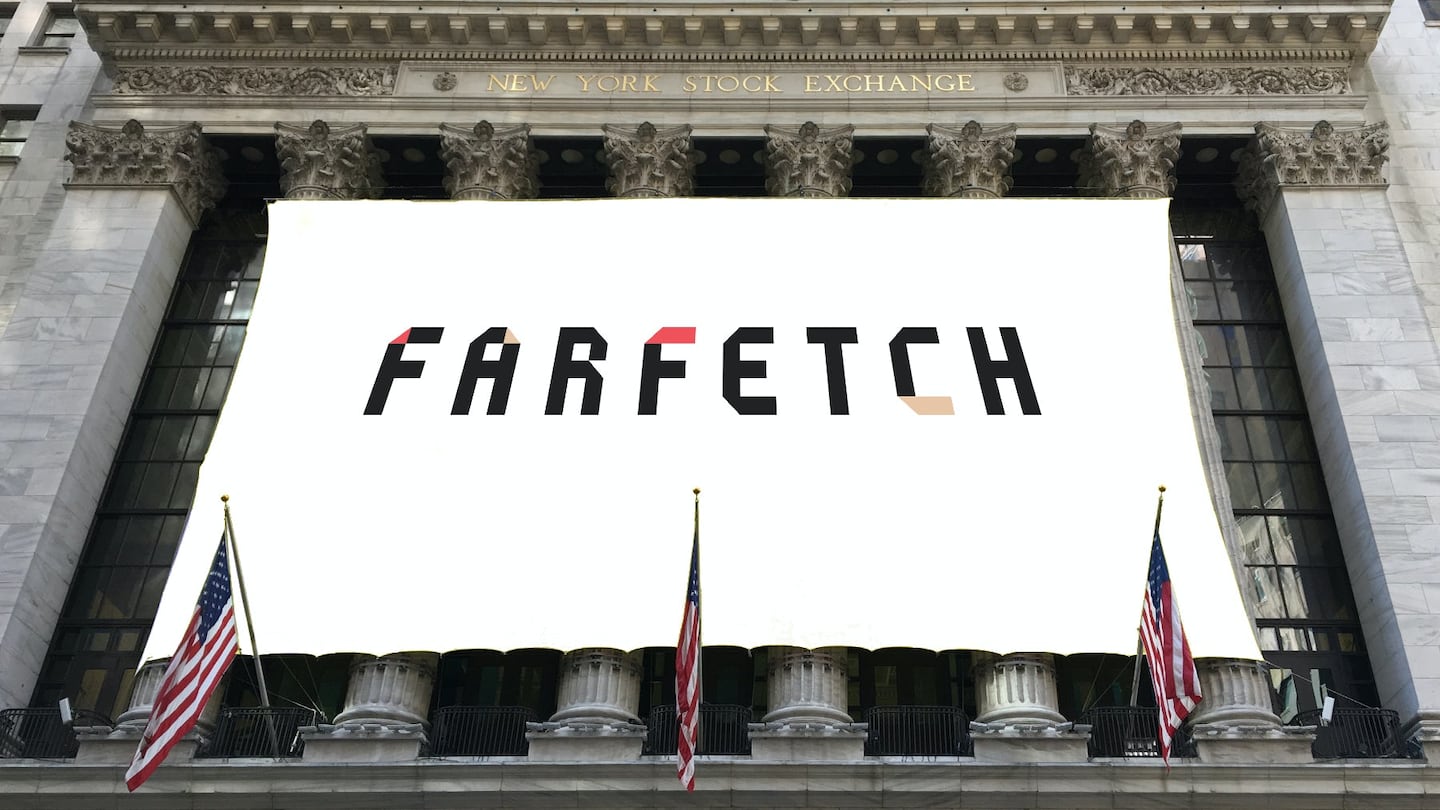
The Business of Fashion
Agenda-setting intelligence, analysis and advice for the global fashion community.

Agenda-setting intelligence, analysis and advice for the global fashion community.

LONDON, United Kingdom — Fashion "unicorn" Farfetch has entered into a joint venture with Chalhoub Group, one of the biggest distributors of fashion and luxury goods in the Middle East, an underserved e-commerce market with high growth potential.
The move puts Farfetch in all of the world's key luxury markets and underscores its global ambitions. The company has raised over $700 million in funding and is seeking scale as it gears up for an initial public offering, which founder and CEO José Neves has called "the next financial milestone for the business." He has been reluctant to lay out a specific timetable for the flotation but according to a source close to the deal, the company is planning to IPO in New York in September 2018 at a valuation greater than $5 billion.
“As one of the largest luxury markets in the world, the Middle East is of great strategic importance to Farfetch,” said Neves on the joint venture with Chalhoub. “We have a presence in China and Hong Kong, Japan, Russia, Latin America, Korea and the US — the Middle East was a big gap in our strategy. The plan is to grow the Middle East very, very fast.”
Together, Farfetch and Chalhoub will launch an Arabic-language site in the first half of 2018; curate products for the local consumer; and increase local supply by bringing Chalhoub’s network of retailers — including Level Shoes, Level Kids and Tryano — as well as other partner franchises to the Farfetch platform. Farfetch will also leverage Chalhoub’s physical retail footprint to extend its omnichannel proposition with an array of delivery options and new services. The joint entity will be headquartered in Dubai and employ 50 people by the end of the year. The terms of the deal were undisclosed.
ADVERTISEMENT
The Middle East is going through a "massive digital disruption" with significant untapped e-commerce potential, according to a 2016 report by McKinsey & Company. "You're talking about a population that is growing and very digitally savvy. They're very big shoppers of fashion and luxury in general, very well-travelled, very well-educated and connected — their usage of social media is incredible. And yet the penetration of luxury e-commerce is tiny compared to the West," explained Neves. "The market is underserved by the major players in online luxury and customers are hungry for it."
While the luxury e-commerce market in the Middle East is still young, some say Farfetch is late to the game. Yoox Net-a-Porter struck a joint venture with tycoon Mohamed Alabbar, founder of Emaar Properties and Emaar Malls, which owns The Dubai Mall, in 2016.
As for Chalhoub — which distributes the likes of Louis Vuitton, Chanel, Ralph Lauren, Céline and Marc Jacobs — the company has been slow to embrace the e-commerce opportunity as competitors have piled into the market. In 2016, Al Tayer Group — partner to brands like Alexander McQueen, Stella McCartney and Giorgio Armani — launched luxury retail e-commerce platform Ounass. In early 2017, Ghizlan Guenez debuted the fashion e-commerce venture TheModist.com, which was followed by the launch of Noon.com, a mass market multi-category platform designed to rival Amazon-backed Souq.com.
"We are the beginning of the online journey," said Patrick Chalhoub, chief executive of Chalhoub Group. "We definitely think there is this gap in the market… only 0.5 percent of the luxury business even gets to the Middle East through their e-commerce platforms." Globally, the portion of personal luxury goods purchases made online is about 9 percent, according to Bain & Company.
In 2016, Farfetch — a platform which connects consumers with a curated network of boutiques and brands — cleared $800 million in gross merchandise value, generating an estimated $150 million in revenue (Farfetch takes 20 to 25 percent commission from partners). The company is not yet profitable, though the core marketplace product "delivered significant underlying profitability" in the fourth quarter of the 2016 fiscal year, according to Neves.
The joint venture with Chalhoub Group is the latest in a series of recent moves by the company. In June, Farfetch announced a partnership with China's second largest e-commerce player, JD.com, to boost sales in the country. As part of the deal, JD.com invested $397 million in Farfetch in a transaction that valued the fashion platform at more than $3 billion, according to market reports.
The same month, Farfetch forged a partnership with Condé Nast, following the demise of the publisher's e-commerce venture Style.com. Earlier this year, Farfetch revealed that Net-a-Porter founder Natalie Massenet was joining the company as non-executive co-chairman. The platform also unveiled its ambitious Store of the Future concept, an "operating system" for physical retail.
Related Articles:
[ How Will Farfetch Make the Mother of All Fashion-Tech Exits?Opens in new window ]
[ Farfetch Partners with JD.com to Boost Chinese BusinessOpens in new window ]
[ Middle East E-Commerce Takes FlightOpens in new window ]
[ Who's Winning the Fashion E-Commerce Race?Opens in new window ]
[ The Family Firms Ruling Fashion in the Gulf StatesOpens in new window ]
The extraordinary expectations placed on the technology have set it up for the inevitable comedown. But that’s when the real work of seeing whether it can be truly transformative begins.
Successful social media acquisitions require keeping both talent and technology in place. Neither is likely to happen in a deal for the Chinese app, writes Dave Lee.
TikTok’s first time sponsoring the glitzy event comes just as the US effectively deemed the company a national security threat under its current ownership, raising complications for Condé Nast and the gala’s other organisers.
BoF Careers provides essential sector insights for fashion's technology and e-commerce professionals this month, to help you decode fashion’s commercial and creative landscape.